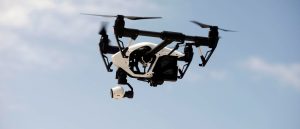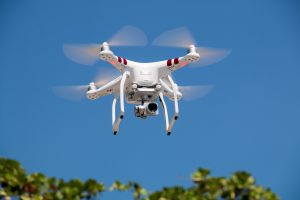 Les drones sont devenus des incontournables dans de nombreuses applications et dans l’actualité. Il suffit de jeter un coup d’oeil sur la guerre en Ukraine pour s’en convaincre (ce n’est qu’un exemple au hasard).
Les drones sont devenus des incontournables dans de nombreuses applications et dans l’actualité. Il suffit de jeter un coup d’oeil sur la guerre en Ukraine pour s’en convaincre (ce n’est qu’un exemple au hasard).International drone day
Le but de cette journée internationale, dont la première édition s’est tenue en 2015, est de présenter le drone sous son jour positif et utile. Depuis, la journée est toujours célébrée mais à date variable. Il semble qu’un consensus se fasse autour du 1er samedi du mois de mai, soit le 6 mai pour l’année 2023.
*Note de l’éditrice: Le World Economic Forum nous informe qu’un drone comme celui de l’illustration ci-haut put planter la graine d’un arbre par seconde allant jusqu’à 100,000 par jour.
 International Drone Day is celebrated on the first Saturday of May every year. This year, it falls on May 6. This holiday raises awareness of drones and their various applications in the civilian sector, from search and rescue operations to package delivery and dropping off medical supplies. Two British drone operators, Sarah and David John O’Neal came up with the idea for this holiday in 2014. Their goal is to highlight the positive and helpful aspects of drones. This combats the skepticism and paranoia that many people around the world have about them. Thousands have celebrated this holiday every year since then.
International Drone Day is celebrated on the first Saturday of May every year. This year, it falls on May 6. This holiday raises awareness of drones and their various applications in the civilian sector, from search and rescue operations to package delivery and dropping off medical supplies. Two British drone operators, Sarah and David John O’Neal came up with the idea for this holiday in 2014. Their goal is to highlight the positive and helpful aspects of drones. This combats the skepticism and paranoia that many people around the world have about them. Thousands have celebrated this holiday every year since then.